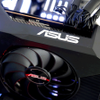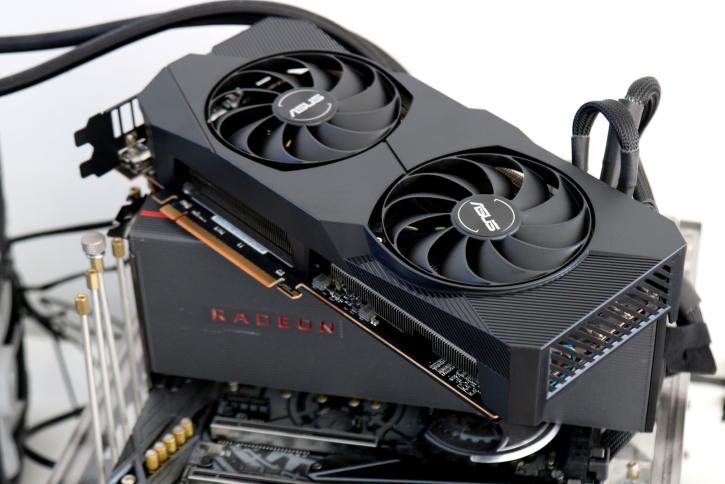Introduction
ASUS Dual Radeon RX 5700 XT DUAL EVO 8G
Is the ASUS Non-Premium edition any good?
We check out the more affordable Dual Radeon RX 5700 XT EVO OC edition. A product that sits on a more mainstream segment compared to the STRIX boards. The product is performing pretty spot on really. Fitted with a thick dual-fan cooling solution we have lots to talk about and check out of course.
It has been quite a journey for AMD, but it is the year 2019 when they released this series, and here we are in the summer of 2020, and the chip producing industry is ready with their new silicon wafer fabrication at 7nm. AMD hasn't been wasting any time, Ryzen 3000 at 7nm, Radeon VII at 7nm, and today we bring you a review of both the Radeon 5700 and 5700 XT. The basis of the product that we test today is the NAVI GPU, with a die fabbed at a 7nm fabricated package and 8GB of GDDR6 graphics memory these cards are released in an aim to compete with the GeForce RTX 2060 and 2070, will it be capable to do that? We can already tell you that the numbers will be interesting to see. The most crucial aspect, however, is pricing. AMD wanted to tackle two price points for NAVI, for the familiar frame of mind let's call the Radeon RX 5700 the PRO revision and then the Radeon RX 5700 XT GPU versions. So the new Radeon RX 5700 and 5700 XT will cost 349 and 399 USD respectively. As we all know, NAVI is the new family of mainstream to high-end (but not enthusiast) Radeon GPUs. NAVI is based on what AMD refers to as RDNA architecture (Radeon DNA). The Radeon 5700 series will also be the first commercial consumer graphics card that is PCIe Express 4.0 compatible. AMD today will launch the reference products, the AIB card with custom designs and cooling will follow in the weeks to come. Reference first though, Radeon 5700 is a GPU with 2304 stream processors. The GPU game clock is dynamic at 1.6 GHz with a peak boost clock to 1.7 GHz. It's bigger brother is the Radeon RX 5700 XT, with a fully enabled NAVI chip it has 2560 shader processors active. Its average game clock will hover in the 1.75 GHz but can boost to 1.9 GHz. We do wish AMD would not make a distinction between a game and max boost clock though as it is just too confusing for the majority of consumers. Both NAVI cards are fitted with GDDR6 memory, that means HBM2 is no longer used opposed to what you have seen with Vega 56/64, an intelligent choice as HBM2 memory is difficult to assemble onto the die substrate (lot's of yield issues there) and that makes it very expensive, next to being an expensive memory type to purchase. What AMD did well is that they have opted for that 8GB GDDR6 graphics memory to run at 14 Gbps, which is nice and fast graphics memory at just the right volume size.
ASUS Radeon RX 5700 XT DUAL EVO
Meet the ASUS Dual Radeon RX 5700 XT EVO OC edition, with a slightly too ling name this product was designed in a 2.5 slot design. ASUS went back to the drawing table and started working on a graphics card that should be a notch more affordable compared to the STRIX series. It still ahs proper dual-fan cooling offering normalized acoustic levels. ASUS clocks this product out of the box at a boost clock towards 1905 MHz. Supported are up to four Displays as the card has DisplayPort x3 and HDMI x1. The card features 8 GB of GDDR6 memory running at 14 Gbps tied towards a 256-bit bus interface, delivering bandwidth of 448 GB/s, that GDDR6 memory has not been tweaked, the ICs are stock 14 GHz (effective clock-rate) but can be bumped a slight notch upward. We'll peek at that in our tweaking segment of this article. The card offers one HDMI 2.0b ports and three DisplayPorts v1.4. As mentioned in the introduction paragraph, the card provides very subtle LED-lit activity at the top side, We'll start with a product overview in the photo-shoot, but have a quick peek first after which we then head onwards into the review.


